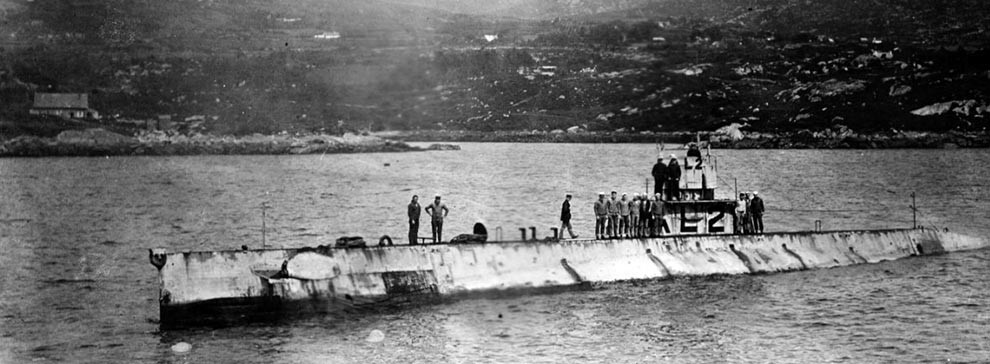
Ireland
U-Boat Engagements: Ireland
Engagements with Germany came early after the destroyers arrived at Queenstown, Ireland in May 1917 when USS Ericsson (Destroyer #56) fired the first torpedo at a German U-Boat on May 21.
USS O'Brien (Destroyer #51) engaged U-16 while escorting SS Elysia 12 miles off Queenstown, Ireland, on June 16, 1917. Sighting a periscope, she launched an attack. A lookout on the foretop saw the submerged U-Boat pass close along the starboard side. A depth charge was dropped but no immediate evidence of damage was found.
German U-boat, U-61, successfully torpedeoed USS Cassin (Destroyer #43) off the coast of Ireland on October 15. In trying to save the ship, Gunner's Mate First Class Osmond Kelly Ingram was killed. He was posthumously awarded the Medal of Honor for his heroism while attempting to loosen depth charges upon seeing an enemy torpedo was about to hit his ship. Ingram is also the first enlisted man to have a ship named after him, USS Osmond Ingram (DD-225, later AVD-9 and APD-35). For their heroism during this attack, Blacksmith William A. Heath and Chief Gunner's Mate John F. Stawitzki, received the Navy Cross while attempting to loosen the depth charges.
USS Porter (Destroyer #59), one of the first destroyers sent to Queenstown, Ireland, kept busy as a convoy escort. Porter severely damaged U-108 on April 28, 1918 while the U-Boat was attempting to intercept a conovy off the English coast. USS AL-2 encountered two German U-Boats during her service. One of those encounters was an engagement with UB-65, in which the U-Boat was sunk off Ireland on July 10, 1918. American submarines such as L-2 were given the designation of AL-2 to distinguish them from their Royal Navy counterparts.
Image: NH 51121: USS AL-2 in Bantry Bay, Ireland, 1918. U.S. Naval History and Heritage Command Photograph.



